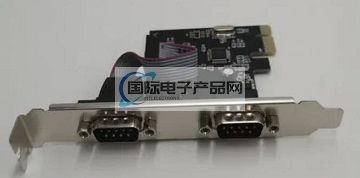Categorization:Product Information
PCI-E (Peripheral Component Interconnect Express) is a computer expansion bus interface used to connect motherboards to other hardware devices such as graphics cards, network cards, sound cards, and storage devices. It is based on the PCI (Peripheral Component Interconnect) bus and is designed to provide higher bandwidth and performance.The PCI-E interface transmits data over multiple data channels (called "lanes" or "lines"). The PCI-E interface transfers data through multiple data channels (called "lanes" or "lines"), each providing a separate path for data transfer. This design allows PCI-E to transmit multiple streams of data simultaneously, resulting in higher transfer speeds and lower latency. Typically, the number of PCI-E channels is denoted by "xN", e.g., "x1" for one channel and "x4" for four channels. The greater the number of channels, the greater the total bandwidth of the interface.PCI-E interfaces come in a variety of sizes and versions, with different sizes and versions offering different bandwidths and features. The following are some common PCI-E interface specifications and versions: PCI-E 1.0/1.1: This is the earliest version of PCI-E, offering a single lane with a bandwidth of 2.5 Gbit/s per lane. although outdated, it is still used in some older devices. PCI-E 2.0: This version offers higher bandwidths of up to 5 Gbit/s per lane. it is backwards compatible with It is backward compatible with PCI-E 1.0/1.1 devices and is widely used in many motherboards and graphics cards from 2007 onwards. PCI-E 3.0: This version builds on PCI-E 2.0 to increase bandwidth and performance even further. The bandwidth per lane reaches 8 Gbit/s and it is also backward compatible with PCI-E 2.0/1.0/1.1 devices. PCI-E 3.0 started to appear on some high-end motherboards and graphics cards in 2010. PCI-E 4.0: This version is one of the mainstream PCI-E specifications today. The bandwidth per lane is increased to 16 Gbit/s, and it is also backward compatible with PCI-E 3.0/2.0/1.0/1.1 devices.PCI-E 4.0 came out in 2017 and is gradually becoming more popular in mainstream consumer motherboards and graphics cards.PCI-E 5.0: This is the latest PCI-E specification. The bandwidth per lane is increased to 32 Gbit/s, and it is backward compatible with PCI-E 4.0/3.0/2.0/1.0/1.1 devices.PCI-E 5.0 was released in 2019 and began appearing on some high-end motherboards and graphics cards in late 2020.

-About International Electronic Products Network platform related to the introduction and sales of products brief: International Electronic Products Network - a professional agent / production / sales of a variety of {connectors | wiring harness | wire and cable products}; if you have a related [connectors | wiring harness | wire and cable products] procurement / purchasing needs or want to buy / to understand which connectors | wiring harness | wire and cable products we can provide solutions, please contact the following Division I business personnel; if you have a related [connectors | wiring harness | wire and cable products] sales / resources and promotion needs, please click "→ Business Cooperation ←" with the person to discuss! If you have related [connectors | wire harness | wire and cable products] sales / resources and promotion needs, please click on the "¡¡ Business Cooperation ←" to discuss with a person!